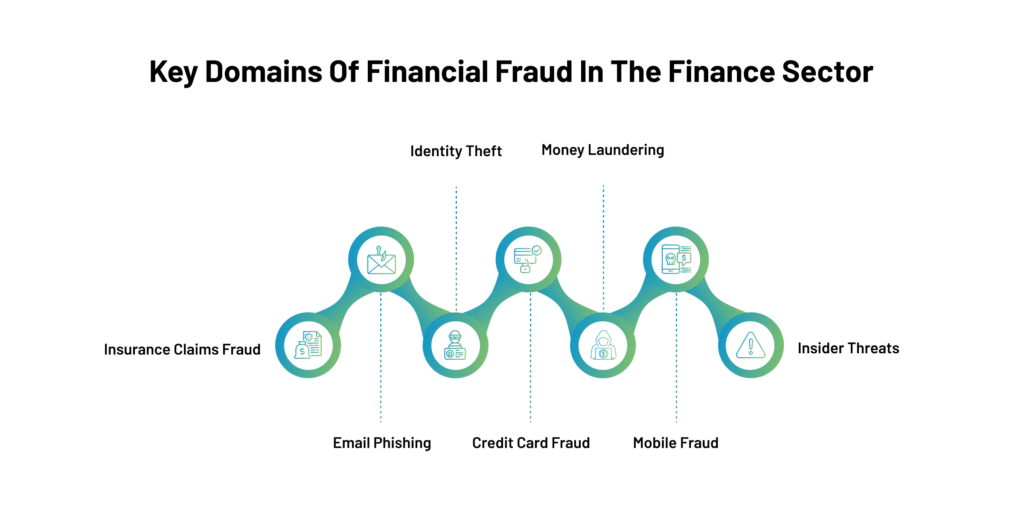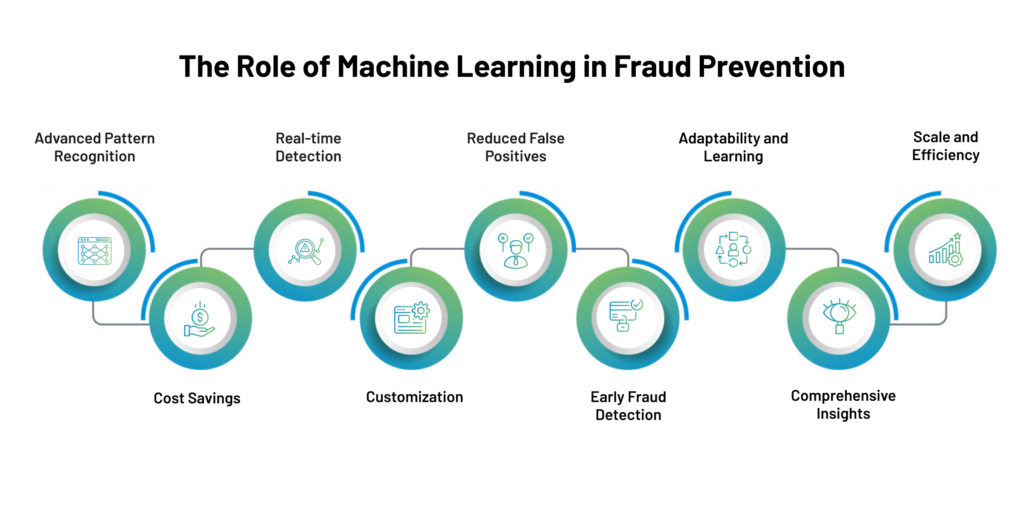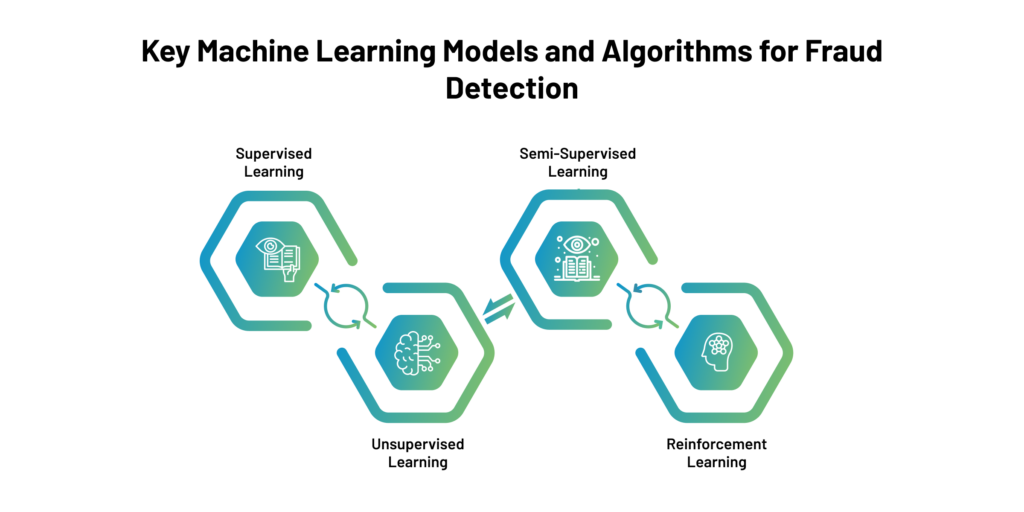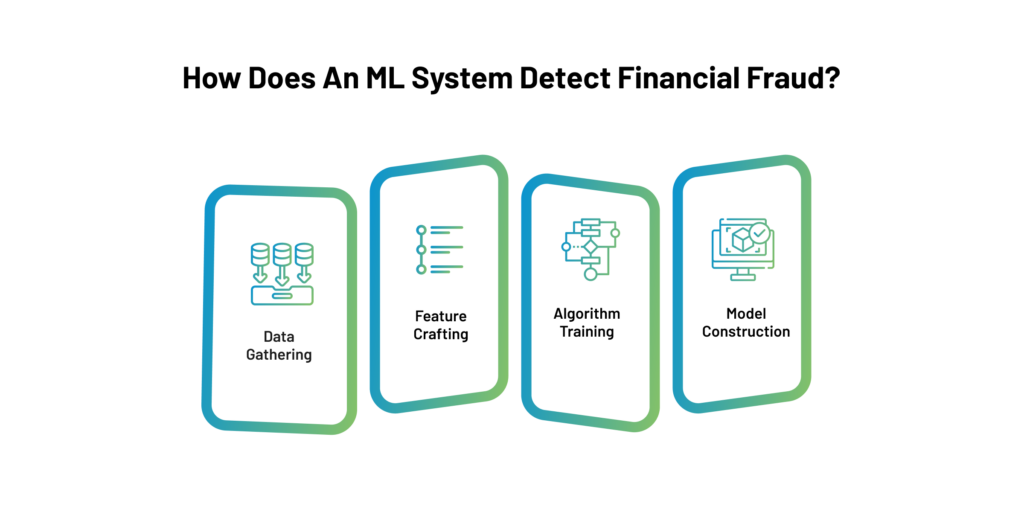The financial services sector is undergoing a technological revolution driven by the transformative power of machine learning (ML). Unlike traditional programming, Machine learning in fintech empowers systems to learn and adapt through experience autonomously, making it an essential tool in modern finance.
Amidst a sea of personal data and high-stakes transactions, the finance sector is particularly susceptible to fraudulent activities. In today’s digital age, malicious actors continuously seek vulnerabilities to exploit, putting sensitive information at risk.
Startling findings from PwC’s Global Economic Crime and Fraud Survey 2020 underscore the gravity of cyber malfeasance, revealing losses exceeding $42 billion within two years. Faced with these alarming realities, financial institutions are turning to cutting-edge innovations such as machine learning to strengthen their defenses.
Machine learning emerges as a powerful solution, equipping the financial services sector with unprecedented tools to protect against digital threats. A forecast by Markets and Markets predicts the global fraud detection and prevention (FDP) market to grow from $20.9 billion to $38.2 billion by 2025, reflecting the remarkable impact of ML.
The fraud detection and prevention scope encompasses critical areas like money laundering, insurance claims, electronic payments, and complex bank transactions. Follow along to see how innovation and security intersect in the finance sector’s battle against financial misconduct.

How digital transformation can grow your business?
Also, Read – Digital Transformation – Accelerating the Fintech Industry Growth.
Key Domains of Financial Fraud in the Finance Sector
In the finance sector, several critical areas are prone to financial fraud, necessitating robust countermeasures. Here are the primary areas where financial fraud commonly occurs:

Email Phishing
Cybercriminals orchestrate attacks, sending deceptive messages and fake website links to unsuspecting users. Machine learning technology aids in automatically identifying these fraudulent emails, safeguarding individuals from unknowingly divulging sensitive information.
Credit Card Fraud
In our digitally-driven world, fraud has surged. Criminals exploit unsecured online connections to steal credit card details. Machine learning algorithms excel in distinguishing legitimate from suspicious transactions, promptly alerting institutions to fraudulent activities.
Mobile Fraud
With the advent of mobile payments, smartphones have become susceptible to hacking and cyber threats. Machine learning’s prowess in detecting anomalies for individual users plays a pivotal role in minimizing mobile fraud risks and securing the expanding realm of mobile financial interactions.
Identity Theft
Cybercriminals target personal information, including bank details and login credentials, to commit identity theft. Machine learning’s application in identity document verification, biometric scanning, and facial recognition bolsters defenses against identity-related fraud.
Insurance Claims Fraud
Dishonest claims for property damage, vehicle accidents, and other insurance scenarios present challenges. Machine learning’s pattern recognition capabilities streamline claim verification, enabling swift detection of falsified cases and preventing unwarranted payouts.
Money Laundering
Illicit funds are often funneled through the financial system using complex transactions. Machine learning algorithms excel in analyzing vast amounts of data, identifying unusual patterns, and flagging potentially fraudulent activities associated with money laundering.
Insider Threats
Even within financial institutions, insider threats pose risks. Machine learning can monitor employee behaviors and detect abnormal activities, helping prevent fraud committed by internal actors.
By harnessing machine learning, the finance sector gains a proactive shield against various fraudulent activities, fortifying its defenses and ensuring the security of individuals and enterprises.
Also, Read – Revolutionizing the Future of Finance: The Impact of Artificial Intelligence and Machine Learning in Fintech
Understanding the Role of Machine Learning in Fintech Fraud Prevention
Embracing machine learning for fraud prevention in your business is a strategic move that yields substantial benefits in an increasingly digital and complex financial landscape. Here’s why integrating machine learning into your fraud prevention strategy is essential:

Advanced Pattern Recognition
Machine learning algorithms possess an unmatched ability to recognize intricate patterns in large datasets. This proficiency enables them to identify abnormal activities that may indicate fraudulent behavior, even when they are subtle and complex to detect manually.
Real-time Detection
Fraudsters are becoming more agile, adapting their tactics swiftly. Machine learning operates in real-time, allowing for immediate identification and response to emerging threats. This proactive approach is crucial in mitigating risks before they escalate into significant security breaches.
Reduced False Positives
Traditional fraud prevention methods often generate false positives, causing inconvenience to genuine customers. Machine learning’s precision minimizes these false alerts by refining its understanding of legitimate behaviors over time, resulting in a more seamless experience for your clients.
Adaptability and Learning
Machine learning models evolve continuously, learning from new data and adapting to fraud techniques. This flexibility ensures that fraud prevention measures remain effective even as criminals devise novel strategies.
Scale and Efficiency
Handling the vast data generated in financial transactions is daunting. Machine learning efficiently processes this data, enabling timely analysis and quick decision-making. This scalability is especially beneficial for businesses with high transaction volumes.
Cost Savings
Traditional fraud prevention methods involve manual reviews and extensive resources. Machine learning automates much of this process, reducing operational costs and increasing efficiency.
Customization
Machine learning models can be tailored to suit the specific needs of your business. They can consider your unique industry challenges, customer behavior, and transaction patterns, resulting in a highly personalized and effective fraud prevention strategy.
Early Fraud Detection
Machine learning’s ability to spot even minor deviations from standard behavior allows for identifying fraud at its earliest stages. This minimizes potential damage and financial losses, preserving the integrity of your business operations.
Comprehensive Insights
Machine learning doesn’t just detect fraud; it also generates valuable insights into the nature of fraudulent activities. These insights can be used to refine your fraud prevention strategy and enhance your overall security posture.
In the swiftly evolving landscape of financial fraud, machine learning is a potent ally that empowers your business with the tools to stay ahead of malicious actors. By harnessing its capabilities, you bolster your defenses and ensure a secure and seamless customer experience, fostering trust and long-term relationships.
Exploring Key Machine Learning Models and Algorithms for Fraud Detection
Machine learning in fintech plays a pivotal role in fortifying fraud detection strategies, employing various models and algorithms tailored to different scenarios:

Supervised Learning
In supervised learning, algorithms learn from labeled historical data, identifying patterns between genuine and fraudulent transactions. This aids in classification, where the model can categorize new transactions as usual or suspicious based on learned patterns. Popular techniques like Decision Trees, Random Forests, and Support Vector Machines fall under this category, as they rely on established practices to make informed predictions.
Unsupervised Learning
In scenarios with limited labeled data, unsupervised learning thrives. Clustering techniques like K-Means and DBSCAN group transactions based on similarities, enabling the model to identify outliers or unusual clusters that might indicate fraud. Unsupervised learning is beneficial for uncovering novel fraud patterns.
Semi-Supervised Learning
Combining aspects of supervised and unsupervised learning, semi-supervised techniques leverage a small amount of labeled data and a larger pool of unlabeled data. This approach can enhance the model’s accuracy in identifying complex fraud patterns by learning from a mix of labeled and unlabeled examples.
Reinforcement Learning
Although less common in fraud detection, reinforcement learning thrives in dynamic environments. It involves an agent learning through trial and error to maximize rewards. Applied to fraud detection, reinforcement learning models can continuously adapt based on real-time feedback, improving their fraud detection capabilities over time.
These diverse machine-learning approaches are integral to creating comprehensive fraud detection systems that adapt to evolving tactics employed by fraudsters. By utilizing the strengths of supervised, unsupervised, semi-supervised, and reinforcement learning, the financial industry can enhance its defenses against various fraudulent activities, ensuring the security of financial transactions and data security.
How does an ML System detect Financial Fraud?
An ML system for fraud detection operates through a sequence of steps designed to identify irregularities and patterns that signify potential fraudulent activities. Here’s an overview of how an ML system works:

Data Gathering
The journey into fraud detection through machine learning begins with the accumulation of data. The system thrives on an extensive dataset to effectively hone its ability to identify fraudulent activities. Therefore, a diverse and comprehensive collection of data is paramount.
Feature Crafting
At the core of this process lies feature extraction. This pivotal step involves defining characteristics that differentiate legitimate customer behaviors from fraudulent ones. This multifaceted process involves:
- Identity Insights: Consider this step as figuring out what distinguishes normal customer behavior from sneaky behavior. We look at different things, like the history of IP addresses, how old an account is, and what devices are used.
- Order Patterns: We dig into various aspects, like how often customers place orders, the average amount of money spent, and whether transactions fail. We also compare shipping and billing details to make sure they match and analyze where things are being shipped from.
- Location Analysis: Comparing shipping and billing details, aligning shipping countries with IP locations, and analyzing location-specific fraud trends.
- Payment Attributes: Exploring indicators like fraud rates linked to specific banks, coherence between customer and billing names, and studying payment method networks.
- Network Exploration: Investigating shared emails, phone numbers, or payment methods within networks.
Algorithm Training
The orchestration of machine learning begins with training algorithms. These guiding principles govern the model’s decision-making process, distinguishing between legitimate and deceitful activities. The more and better data we use, the smarter the system becomes.
Model Construction
After rigorous training, a potent machine learning model tailored for fraud detection emerges. Equipped with rapid response capabilities and elevated accuracy, this model becomes an unwavering sentinel against fraudulent endeavors. To maintain its efficacy, a continuous cycle of enhancement and updates is crucial to ensure optimal performance.
This intricate sequence of steps illustrates how machine learning seamlessly transforms into an invincible force in fraud detection.
By deftly navigating data accumulation, extracting meaningful features, and refining its mechanisms, machine learning emerges as a vigilant guardian, steadfastly defending against financial misconduct.
Also, Read – Regulatory Challenges and Compliance in Fintech Mobile Apps
In the End!
In the rapid evolution of the financial landscape, where innovation is the currency of survival, machine learning is the quintessential transformational force. As businesses navigate the complex terrain of financial services, the partnership between machine learning and financial fraud detection emerges as a beacon of resilience.
This technological synergy safeguards invaluable assets and fosters a renewed sense of trust in an increasingly digital and interconnected world. Fintech software development companies and business transformation consultants are at the forefront of this revolution, harnessing the power of machine learning to equip financial institutions with the tools they need to thwart fraudsters and secure the financial ecosystem.
As we gaze into the future horizon, one thing becomes clear: machine learning and finance fusion is not merely about detection, prevention, and protection. It’s about enabling financial entities to adapt, learn, and thrive amidst an ever-shifting landscape of risks and opportunities. With machine learning as our sentinel, financial fraud will face an unyielding adversary, and the promise of a secure financial world will become an achievable reality.



